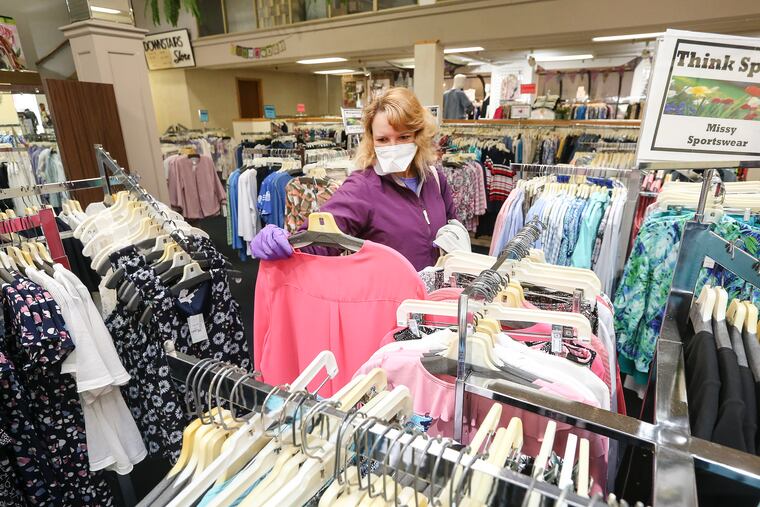‘Pent-up demand’ and ‘revenge shopping’ are driving U.S. retail and restaurant spending
In a report Tuesday, the U.S. Commerce Department said retail sales appeared to have jumped dramatically in May.

National retail and restaurant spending jumped dramatically in May as stores and dining began to reopen across parts of the country during the coronavirus pandemic, according to a preliminary sales report from the U.S. Commerce Department released Tuesday.
May sales were projected at $485.5 billion, a 17.7% jump from April. But those numbers were still 6.1% below what they were last May, noted the report, which relied on surveys given to about 5,500 retail and food service companies in the United States.
Still, Jaime Ward, the Boston-based head of retail finance for Citizens Bank, remained heartened by last month’s improvement.
“That pent-up demand is driving this," he said, adding that some customers could have used stimulus checks to go shopping. “Part of it is [that] growth is coming off a really low-level month before.”
States in the South and Midwest began to reopen before those in the Northeast that had contended with an ongoing barrage of coronavirus cases.
It’s “revenge shopping,” Ward said. “Payback for being cooped up for 2½ months. They want to go out and do some things they’ve been denied.”
In Philadelphia and New Jersey, the states slightly loosened safety restrictions by allowing outdoor dining, although indoor dining remained prohibited. New Jersey also permitted day-care centers and nonessential retail to resume operations Monday, with hundreds of customers crowding into stores to buy everything from clothes to household goods.
» READ MORE: Beauty industry falters in the pandemic, but the future, analysts say, could be promising
Of 1,910 city residents who responded to a June survey from the Center City District, 20% said they would dine out immediately as soon as they were allowed. Another 20% would do the same in the first two weeks, 15% in three to four weeks, 24% after a month, and 21% after at least two months.
For shopping, 20% said in the survey that they would visit stores immediately; 23% would go within two weeks; 16 percent would wait the longest — at least two months.
In New Jersey, some residents grabbed the chance to shop in person.
“Things are going very well,” said Andréa Marcellé, owner of the Paris-inspired Haddonfield dress boutique Maison Marcellé, on Monday, the first day she was finally able to reopen her shop. “Tomorrow will be three months since we closed our French doors.”
In those three months, she maintained business online, delivered merchandise to customers’ homes, and offered curbside pickup.
"Certainly not enough to support a business,” she said, “but we’ve been working full time to do the best that we could.”
The shop brimmed with goods that Marcellé had selected in Paris. She had inventory for the spring and summer, but worried about what she would have for the fall and holidays, given the possibility that she would be unable to make one of her regular trips to France due to the pandemic.
“We’re going to struggle now with how to maintain the authenticity, the Frenchness, of this boutique,” she said.
» READ MORE: Whole Foods and other retailers have ended hazard pay for workers even as coronavirus remains a threat
She found a potential solution with French vendors who could ship items to her, “but it’s going to be a different experience when I have to take their word for it that it’s Maison Marcellé-worthy.”
Among small businesses, a raft of chains, most recently Nordstrom and Nordstrom Rack stores, reopened in the two states on Monday and Tuesday, adding to the growing list of chain retailers — Gap Inc., Ulta, Macy’s, Best Buy — that have opened for the first time since March.
Certain retailers performed better than others, Ward said. Many groceries, hardware, arts and crafts, and liquor stores were able to weather the economic beat-down compared with other sectors, such as clothing.
“Apparel still has a long way to go before it gets back to last year’s levels,” he said. “ … There are some pretty clear winners and losers."
Among other winners, Ward said, big-box stores deemed essential — Walmart, Target, Home Depot, and Lowe’s, among others — thrived during the pandemic.
“Some of the largest companies out there did very well and got bigger," he said. “Meanwhile, a lot of the mom-and-pop [stores] had to stay closed, and that was tough.”